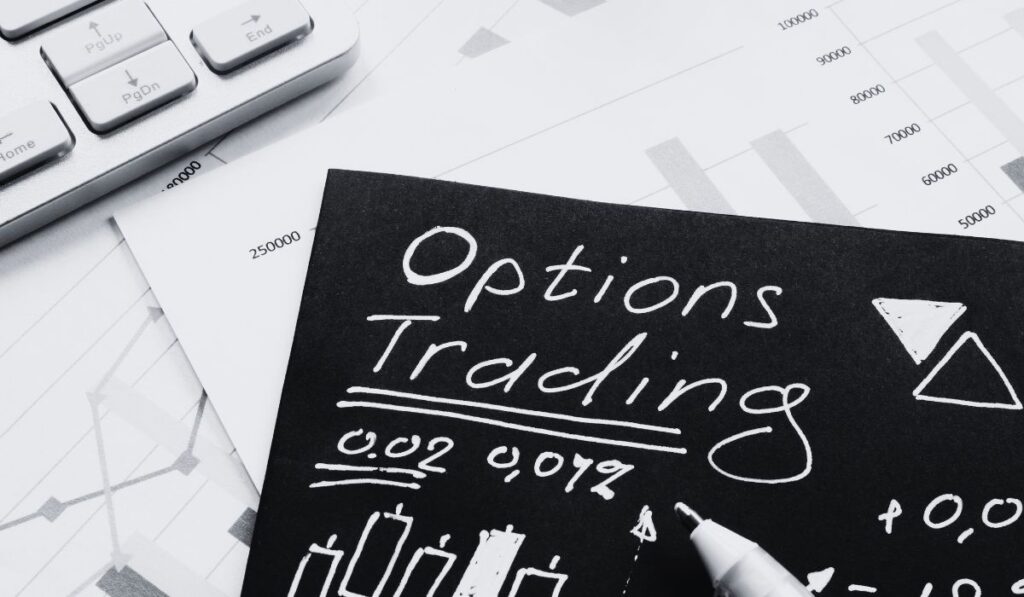Table of Contents
Can You Make Money Prop Trading?
If you’ve ever wondered, “Can you make money prop trading?”, you’re not alone. This form of trading offers a unique set of opportunities and challenges that can be both rewarding and risky. In this comprehensive guide, we’ll delve into the nuts and bolts of prop trading. We’ll explore its pros and cons, the potential earnings, the costs involved, and much more. Whether you’re a seasoned trader or a newbie looking to get funded, this article aims to provide you with valuable insights into the world of prop trading.
What is Prop Trading?
Proprietary trading, commonly known as prop trading, is a trading style where a trader uses the capital of a proprietary trading firm to execute trades. Unlike regular trading, where you’re trading with your own money, prop trading allows you to leverage someone else’s capital—specifically, that of the prop firm you’re associated with.
The Role of a Prop Trader and Responsibilities Involved
As a prop trader, your primary responsibility is to generate profits by trading various financial instruments like stocks, forex, options, and futures. You’re not an employee of the firm; rather, you act as a contractor. This means you have the freedom to trade as you see fit, but it also means you’re responsible for any losses incurred. You’ll need to adhere to the risk management guidelines set by the firm and may also have to meet specific performance metrics.
How Prop Firms Make Money and Their Business Model
Prop firms make money through a profit-sharing model. When you, the trader, make a profitable trade, the earnings are split between you and the firm based on a pre-agreed ratio. The firm also benefits from trading volume, as more trading activity can lead to tighter spreads and better opportunities for profit. Some firms may also charge fees for software, training, or other services, but the primary revenue comes from the profits generated by their traders.
The Typical Profit-Sharing Ratio Between the Trader and the Firm
The profit-sharing ratio varies from firm to firm but is a crucial aspect to consider when choosing where to trade. A common split might be 80/20, meaning the trader keeps 80% of the profits while the firm takes 20%. It’s essential to understand this ratio as it directly impacts your potential earnings.
By understanding the basics of what prop trading is, the roles and responsibilities it entails, and how prop firms operate, you’ll be better equipped to navigate this exciting yet complex landscape. Stay tuned as we dive deeper into the advantages, potential earnings, and pitfalls you should be aware of in the world of prop trading.
Benefits of Prop Trading
Prop trading has a magnetic pull that attracts traders from all walks of life, especially those who are funded or looking to get funded. The allure is not just in the potential for high profits, but also in the unique advantages that come with trading under a prop firm’s umbrella. Let’s delve into some of these captivating aspects.
Access to More Capital
One of the most enticing benefits of prop trading is the access to a larger pool of capital than you might have on your own. Imagine trading with a $200,000 account instead of your $2,000. The potential for profit scales up dramatically. With more capital, you can diversify your trades, take positions in higher-value assets, and essentially make moves that were previously out of reach.
But it’s not just about the money; it’s about the opportunities that come with it. More capital allows you to implement more sophisticated trading strategies that require a larger balance to maintain the required margin, especially in markets like forex and futures. It’s like playing poker with a big stack; you can push around the small stacks and control the table more effectively.
Risk Management
In a typical trading setup, the risk is all yours. If you lose, it comes out of your pocket. However, prop trading shifts some of this financial risk away from you and onto the firm. You’re trading with the firm’s money, so they share in the losses. Of course, this doesn’t mean you can be reckless; most firms have strict risk management protocols that you’ll need to follow. But it does provide a safety net that can be psychologically liberating.
For instance, let’s say there’s a sudden market event that causes significant losses. If you were trading with your own money, you’d bear the brunt of it. But in a prop trading setup, the firm absorbs some of that shock, mitigating your personal financial risk. This shared risk model can make it easier for traders to focus on strategy rather than constantly worrying about the downside.
Tools and Support
When you join a prop firm, you’re not just getting access to more capital; you’re also getting access to a suite of tools and support systems that can elevate your trading game. Many prop firms offer state-of-the-art trading platforms, real-time market data feeds, and advanced charting tools that you might not have access to as an individual trader.
But the support goes beyond just technology. Prop firms often have a team of analysts, experienced traders, and even psychologists who can provide valuable insights and advice. Some firms offer educational resources, training programs, and even one-on-one coaching to help you become a better trader. This level of support can be invaluable, especially when you’re looking to scale up your trading activities.
The appeal of prop trading lies in its unique blend of financial and non-financial benefits. From access to more capital and shared risk to top-notch tools and expert support, prop trading offers a compelling package that’s hard to resist for any serious trader.
The Pros and Cons of Prop Trading
Before diving headfirst into the world of prop trading, it’s crucial to weigh the pros and cons. While the allure of prop trading is undeniable, it’s not without its pitfalls. Let’s break down the advantages and disadvantages to give you a balanced perspective.
Advantages
Increased Profit Potential
The most obvious advantage is the potential for increased profits. With access to more capital, you can take larger positions and diversify your portfolio more effectively. This can lead to significantly higher returns, especially if you’re an experienced trader with a proven strategy.
Access to Advanced Trading Tools
Prop firms often provide their traders with cutting-edge trading platforms, real-time market data, and advanced analytical tools. These resources can give you a competitive edge, allowing you to make more informed decisions and execute trades more efficiently.
Lower Operating Costs
When you’re trading with a prop firm, you often benefit from lower fees and commissions compared to what you’d pay as an individual retail trader. This is because prop firms usually have institutional-level agreements with brokers, passing on some of the savings to you. Lower costs mean higher net profits, making your trading activities more lucrative.
Disadvantages
Regulatory Risks
One of the downsides of prop trading is the lack of regulation surrounding many prop firms. This can expose you to a higher level of risk, making due diligence essential before you commit to a particular firm. We have seen what happened to a firm like MyForexFunds.
Business Risks Including Upfront Fees
Many prop firms require an upfront fee or “desk fee,” especially if you’re a new trader. This fee may or may not be refundable, depending on your performance and the firm’s policies. Additionally, some firms may require you to share in the losses, which can be financially risky.
Emotional and Psychological Impact
Trading with larger sums of money can be stressful, even if it’s not your own capital. The pressure to perform and generate profits can take a toll on your emotional well-being, affecting your decision-making abilities and overall trading performance.
How Much Can You Make in Prop Trading?
Having explored the advantages and drawbacks, let’s now delve into the possible income from prop trading.
Profit-Sharing Ratios
The profit-sharing ratio is a critical factor that determines your earnings. A typical ratio might be 80/20, meaning you keep 80% of the profits and the firm takes 20%. Some firms offer more flexible ratios, especially for experienced traders. Understanding this ratio is crucial, as it directly impacts your take-home pay. Instant funding prop firms used to take a 50% profit split because traders did not have to go through challenges. Now, even instant funding prop firms offer profit split as high as 90%.
Risk Contributions
Some prop firms require traders to make a “risk contribution,” which is essentially a deposit that you might have to forfeit if you incur losses. This deposit serves as a form of insurance for the firm but also affects your earnings. If you’re profitable, the risk contribution usually remains untouched and may even be returned to you.
Real-world Examples
To give you a clearer picture, let’s look at some real-world examples. Firms like FXIFY and SurgeTrader offer profit-sharing ratios of up to 90%. There are also prop firms like 1of1 Funding that offer a 100% profit split.
Prop trading offers a mixed bag of opportunities and challenges. While the potential for high profits and access to advanced tools is enticing, the risks and pressures are not to be overlooked. Your earnings can vary widely depending on the profit-sharing ratio, any required risk contributions, and, of course, your skill as a trader.
Costs Involved in Prop Trading
While prop trading offers the temptation of high profits and advanced tools, it’s essential to consider the costs involved. These costs can eat into your profits and affect your overall trading experience.
Types of Fees
Software Fees
Some prop firms charge a fee for using their proprietary trading software. This fee can vary but expect to pay around $200 per month for access to state-of-the-art platforms.
Subscription Fees
Some firms have a monthly subscription fee, which can also apply to simulation accounts. This fee is usually in addition to any software fees and can range from $50 to $100 per month.
Evaluation Fees
Before you start trading with a prop firm, you’ll often have to go through a prop firm challenge, which usually comes with a one-time fee. This fee can range from $100 to several hundred dollars, depending on whether it is a 1-phase or 2-phase evaluation.
Hidden Costs
Emotional Toll
The pressure to perform can be emotionally draining. Trading larger sums of money, even if it’s not your own, can lead to stress and anxiety, affecting your trading decisions.
Time Investment
Prop trading isn’t a set-it-and-forget-it endeavor. It requires a significant time investment for market research, strategy development, and actual trading. This time commitment can be a hidden cost, especially if you have other responsibilities.
Opportunity Costs
By committing to a prop firm, you may be giving up other trading or investment opportunities. It’s essential to weigh these opportunity costs against the potential benefits of prop trading.
The Application and Verification Process
Getting into a prop firm isn’t as simple as signing up and starting to trade, unless you opt for an instant funding prop firm. There’s usually a rigorous verification process to ensure you’re a fit for the firm and vice versa.
The Challenge Phase
Take the prop firm FXIFY, for example. The first step is the trading challenge, designed to test your trading skills. You’ll have to pay a startup fee, which varies depending on the account size you choose. Once paid, you’ll get a demo account with specific target goals and stop-loss limits. You have 30 days to achieve a 10% return on the account while adhering to maximum loss and daily loss limits. Or you can purchase an add-on for unlimited trading days.
Verification and Approval
If you pass the challenge, you move on to the verification phase. This involves achieving another 5% return over a 60-day period, again with specific rules regarding losses. FXIFY doesn’t charge additional fees for this phase. Once you pass the verification, you’re approved to trade the firm’s capital.
It’s crucial to be aware of both the visible and hidden costs involved. Additionally, getting your foot in the door requires passing through rigorous verification phases, exemplified by firms like FXIFY. Understanding these aspects will help you make an informed decision about whether prop trading is the right path for you.
Red Flags and Pitfalls
While prop trading offers a plethora of opportunities, it’s not without its dark corners. Awareness of these red flags and pitfalls can save you from financial and emotional distress.
The Dark Side of Prop Trading
Making Money from Uneducated Traders
Some prop firms have a business model that capitalizes on the inexperience of novice traders. They charge hefty fees for evaluations and challenges, knowing that a significant percentage of applicants will fail. This is a lucrative revenue stream for the firms but a drain on the pockets of uneducated traders.
Statistics on Failure Rate
The failure rate in prop trading is not to be ignored. According to a study from the University of California, only 13% of day traders were consistently profitable over a six-month period. This sobering data should serve as a cautionary note for anyone considering a career in prop trading. The odds are not in your favor, especially if you’re not adequately prepared.
Conclusion
Prop trading is a high-risk, high-reward venture that offers both opportunities and pitfalls. While the allure of high profits and advanced trading tools is tempting, the risks are substantial, and the odds of success are not particularly encouraging.
Career In Prop Trading
If you’re considering a career in prop trading, go in with your eyes wide open. Be aware of both the visible and hidden costs, understand the risks, and be prepared for the emotional toll it can take.
Actionable Advice
- Do thorough due diligence before choosing a prop firm.
- Start with a simulation account to test your strategies without financial risk.
- Be aware of the emotional and psychological aspects of trading large sums of money.
- Continuously educate yourself to stay ahead in this highly competitive field.
In summary, prop trading can be a viable way to make money for those who are well-prepared, disciplined, and aware of the risks involved. But for the unprepared or the overconfident, it can be a financial minefield. Choose wisely.











![Funded Picker Review (2025) + 15% Discount Code [PFR15] 11 funded picker](https://propfirmreviews.net/wp-content/uploads/2025/08/funded-picker-1024x576.jpg)



